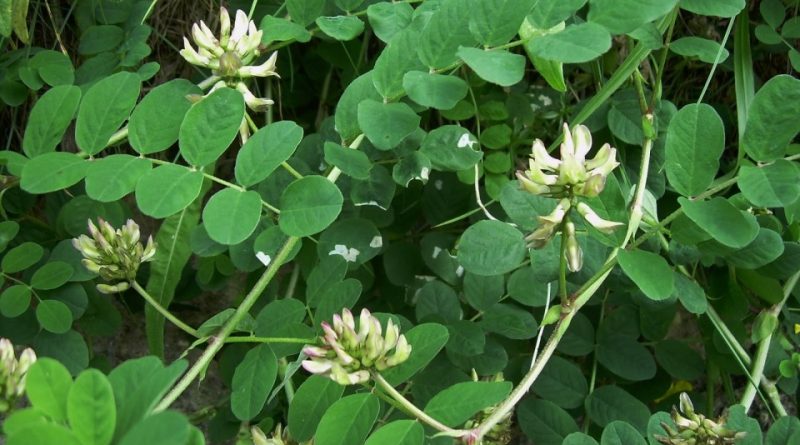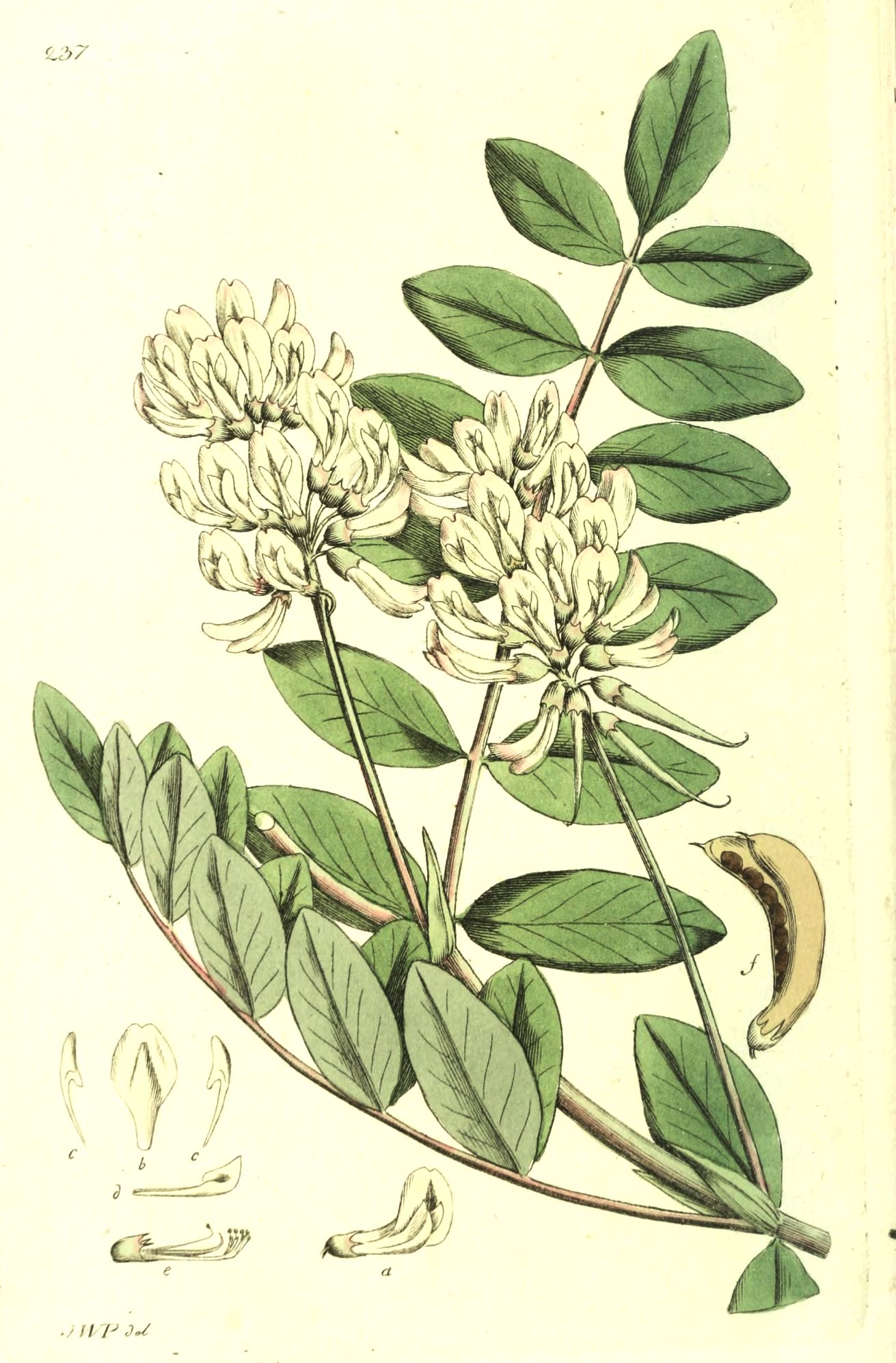Astragalus glycyphyllos
Astragalus glycyphyllos
Milk vetch (Astragalus glycyphyllos L. 1753) is a small shrub belonging to the Fabaceae family.
Systematics –
From the systematic point of view it belongs to the Eukaryota Domain, United Plantae, Spermatophyta Superdivision, Magnoliophyta Division, Magnoliopsida Class, Subclass Rosidae, Fabales Order, Fabaceae Family, Subfamily Faboideae, Tribale Galegeae and then to the Genus Astragalus and to the Species A. glycyphyll.
Etymology –
The term Astragalus comes from the Greek name ἀστράγαλοϛ astrágalos astragalus, quoted by Pliny; perhaps from a bone of the tarsus (used by Greeks and Romans to obtain dice for games) which refers to the angular shape of the seeds (according to A. Gentil and Dave’s Garden) or of the gnarled roots (according to D. Gledhill and Flowers in Israel) . According to A. Neill, the Greek name of the plant derives from αστήρ astér astro and from γάλα gála latte for the shape and color of the flower and because the ancients believed that it increased the milk production of the goats that fed on it; even the common English name (‘Milk vetch’) would seem to support this theory.
The specific epithet glycyphyllos comes from the Greek γλῠκύς glycýs sweet, lovable and from φύλλον phýllon leaf: which has sweet leaves.
Geographical Distribution and Habitat –
The Astragalus glycyphyllos is a species from the South Eurosberian area that grows therefore in the warm areas of Europe and southern band of Siberia.
This plant is common in Italy, with the exception of the islands, and its habitat is that of grassy and limestone places and deciduous and mesophilic woods where it normally grows between 100 and 1400 m.
Description –
Astragalus glycyphyllos is a hemicriptophyte reptant species; it is therefore a perennial plant that propagates by means of buds placed on the ground whose stems are creeping and not very high and the root is of the collated type.
It has a creeping epigean stem, with a prostrate, glabrous or with simple hairs, little branched and without thorns, with a maximum size of 30–100 cm of extension, but at most it reaches 20 cm in height. The stem at the flowering takes on a reddish color.
It has pale green leaves, alternate, imparipinnate, composed of 9 to 15 ovate-elliptic segments, glabrous, 2–4 cm long and patent, with an overall leaf length of at most 20 cm. At the base of the petiole there are whole stipules in lanceolate form.
The inflorescences have an erect axillary raceme, with smaller size of the leaves and with a number of flowers from 8 to 30 for inflorescence.
The flowers are pentamers, hermaphrodites, dialipetals, zygomorphs and briefly pedunculated with a length of 11-15 mm, often with a pendulous bearing which are pollinated by means of butterflies or nocturnal moths.
They have gamosepalo calyx it is hairless of bell-shaped, briefly toothed. The corolla is typically papilionacea with 5 fragrant petals of cream or greenish yellow color and is keeled with the obtuse end.
They have 10 stamens while the ovary is monocarpalpate and exceeding.
The anthesis is between May and July.
The fruits are legumes of sharp shape with a circular section and slightly arched, glabrous, about 3–4 cm long. Sometimes they can be conniving.
Cultivation –
For the cultivation of the Milk vetch it is taken into account that it is a plant that in its habitat grows at the edge of the woods, in bushes, along shaded paths, on mesic clayey soils, from rich in sub-acid bases, often in disturbed environments , from sea level to the mountain range.
Its cultivation, through sowing, could be interesting for the feeding of the cattle because of the nourishing power of this plant and also because being a legume it contributes to the enrichment in nitrogen of the lands. In fact, it is not necessary to fertilize it but to put it into rotation before graminaceous species.
Uses and Traditions –
Astragalus glycyphyllos takes the common names of wild liquorice, bastard licorice, sweet astragalus or vecciarine.
This plant can be confused with a similar species which is the Astragalus cicer L., that is the wild Chickpea: it differs however for the type and the dimensions of the stem (up to 1 meter, covered with hairs and not creeping) and for the leaflets that are lanceolate and not elliptical.
As said the Astragalus glycyphyllos has a good use as a forage plant where, among other things, the leaves are very appetite from the cattle.
It is therefore an important fodder because of the nutritional value of the very dried up plant: there are nitrogenous substances, raw fats, cellulose, water, salts and vitamins.
Preparation Mode –
The Milk vetch obviously cannot have the same uses as licorice (Glycyrrhiza glabra L.) but can find an interesting use in the kitchen to make tea.
Guido Bissanti
Sources
– Acta Plantarum – Flora of the Italian Regions.
– Wikipedia, the free encyclopedia.
– Treben M., 2000. Health from the Pharmacy of the Lord, Advice and experiences with medicinal herbs, Ennsthaler Editore
– Pignatti S., 1982. Flora of Italy, Edagricole, Bologna.
– Conti F., Abbate G., Alessandrini A., Blasi C. (edited by), 2005. An annotated checklist of the Italian vascular flora, Palombi Editore.
Attention: Pharmaceutical applications and food uses are indicated for informational purposes only, do not in any way represent a medical prescription; therefore no responsibility is assumed for their use for curative, aesthetic or food purposes.


